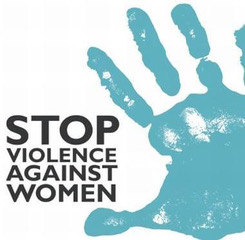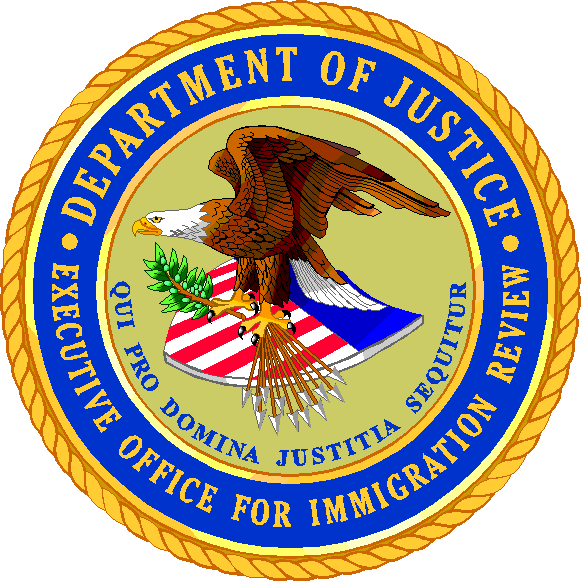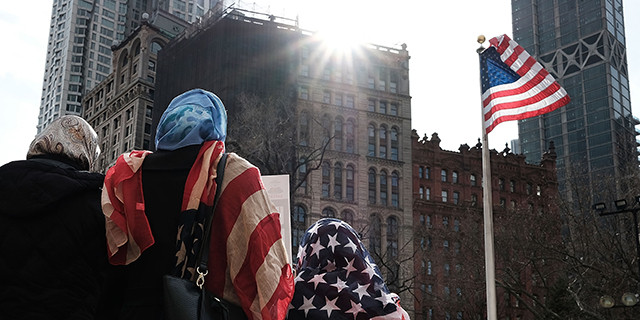Internal Scholarship
Filter
Post List

An Overlooked Consequence of the Government Shutdown: The Expiration of the Violence Against Women Act
By Mackenzie Walz Associate Editor, Vol. 24 On December 22nd, 2018, the United States government entered a partial shutdown after Congress and the White House failed to reach an agreement over the amount of funding to appropriate for the construction of a wall at our southern border. Since that moment, the national conversation has focused on the plight of immigrants and of federal workers. But the shutdown had another dire consequence, which, despite the effort of some Senators,[1] went virtually unnoticed: the Violence Against Women Act expired,[2] which left the fate of several grant programs critical to the protection of many Native American[3] women uncertain. The Violence Against Women Act (VAWA) was passed by Congress in 1994 in response to persistent advocacy from survivors, advocates, police, attorneys, and scientists to address the prevalence of violence plaguing women throughout the country.[4] After years of blatant inattentiveness to this violence, the passage and substance of VAWA was revolutionary.[5] The Act aims to reduce domestic violence, dating violence, sexual assault, and stalking by increasing the availability of victim services and by holding offenders accountable.[6] These objectives are carried out through the appropriation and disbursement of funds to programs run by independent nonprofit organizations or state, local, and tribal governments. Congress established the Office on Violence Against Women (OVW) within the Department of Justice to administer the grant programs. While four of the grant programs are considered “formula grant programs” and are funded through congressional appropriation, the remainder of the grant programs are discretionary, meaning OVW has the authority to determine the scope, eligibility, and funding of these programs.[7] VAWA has reduced the prevalence of domestic violence throughout the United States, but it has not eliminated it. Domestic violence still affects people from all different socioeconomic, racial, religious, and sexual identity backgrounds.[8] According to the National Coalition Against Domestic Violence, one in three women will experience intimate partner violence in their lifetime.[9]
Does it Hurt to Ask? Citizenship Question Proposed for 2020 Census Faces Legal Challenges
By Rose Lapp Associate Editor, Vol. 24 Congress is granted the power to carry out the census by Article 1, Section 2 of the Constitution, which reads: “The actual Enumeration shall be made within three Years after the first Meeting of the Congress of the United States, and within every subsequent Term of ten Years, in such Manner as they shall by Law direct.”[1] The responsibility of administering the census lies with the Secretary of Commerce. The census has not included a question about citizenship since 1950.[2] However, in March of 2018, Commerce Secretary Wilbur Ross announced that the 2020 Census would include the question “Is this person a citizen of the United States?”[3] This announcement was met with both great support and great outrage. President Trump’s 2020 reelection campaign sent an email endorsing the proposed change, stating that “The President wants the 2020 United States Census to ask people whether they are citizens. In another era, this would be COMMON SENSE.”[4] Civil rights groups, however, banded together almost instantaneously to bring lawsuits in New York, California and elsewhere, aimed at obtaining an injunction to prevent the question’s inclusion.[5]
Is Gang Membership a Crime? How RICO Laws Turn Groups into Gangs
By Kerry Martin Associate Editor, Vol. 24 On June 18, 2018, in a courtroom at the Theodore Levin U.S. Courthouse in downtown Detroit, at the end of a long pretrial argument on a matter of evidence, defendant Corey Bailey stood up. The courtroom was nearly full: this was preparation…
Arbitrary Paternalism and the SEC Accredited-Investor Standard
By Leah Duncan Associate Editor, Vol. 24 In developing the current accredited investor requirements to balance competing considerations of investor protection and capital formation, the Securities and Exchange Commission has used proxies that give rise to discrimination against communities of color.[1] While this problem is on its face economic in nature, I will approach it through the lens of race and ethnicity to illuminate the ways in which the accredited investor requirement excludes communities of color from avenues to wealth. Pursuant to the Securities Act of 1933, the SEC requires that a company or private fund either register the sale or offering of their securities or be exempted based on a safe harbor regulation. Section 4(a)(2) of the Act provides an exemption for private sales which are further governed by Regulation D requirements that dictate purchasers must be “accredited investors.” So, what does it mean to be an accredited investor? The SEC defines an accredited investor as anyone who “has a net worth over $1 million alone or together with a spouse” or someone who “has earned income that exceeded $200,000 or $300,000 together with a spouse in each of the prior two years, and reasonably expects the same for the current year.”[2] In order for a person to invest in a private security offering, they must comply with at least one of these requirements. The goals of these requirements include protection of investors and the facilitation of capital formation.[3] The SEC has had to grapple with how to balance these two aims. Over-protection of investors could make it more burdensome for some investors to participate in the capital markets. While too much focus on facilitating capital formation may leave investors prey to heightened risk of financial harm. With these concerns in mind, the SEC has decided that income and net-worth “serve as proxies for financial experience, sophistication, and adequate bargaining power.”[4]
What the Passage of Michigan’s Proposal One Means for Black and Latinx People
By Elizabeth Morales-Saucedo Associate Editor, Vol. 24 On November 6, 2018, 56% of Michigan voters supported the passage of Proposal One approving the legalization of recreational use and possession of marijuana by persons 21 and older.[1] Michigan is the tenth state in the United States, and the first state in the Midwest, to legalize the recreational use of marijuana.[2] The initiative is set to become law by November 26, 2018, according to Secretary of State spokesman Fred Woodhams.[3] Before Michigan residents ‘light up,’ however, caution is advised as marijuana is still an illegal substance under federal law.[4] This advice is particularly true for Black and Latinx people who will likely continue to face higher arrest rates for marijuana than white people after its legalization.[5] As Michigan is the tenth state to legalize marijuana, some lessons can be learned from the experiences of previous states who passed similar legislation. Specifically, data collected from Colorado, Alaska, and Washington, D.C. helps answer the question; what does the passage of Proposal One mean for Michigan and its communities of color?
California’s Efforts to Reform Bail Leaves Much to be Desired
By Jules Hayer Associate Editor, Vol. 24 Despite recent developments in California to overhaul the bail system, the state still has a long way to go in order to create effective change. In January of this year the California Court of Appeals ruled that, before setting bail, judges must take into account the financial situation of a defendant and determine whether the defendant can be released without imposing a danger to public safety.[1] Moreover, the prosecution bears the burden of presenting clear and convincing evidence which establishes that no conditions of release would ensure the safety of the community, thus requiring the confinement of the person while awaiting trial.[2]
How Jeff Sessions is Quietly Transforming Immigration Law to Promote His Anti-Immigrant Agenda
By Samantha Kulhanek Associate Editor, Vol. 24 The Attorney General’s authority to refer Board of Immigration Appeals (“BIA”) decisions to himself for review was established via regulation in 1940,[1] and yet this power appears to be receiving more attention today than it ever has.[2] The appointment of Jeff Sessions as Attorney General prompted a string of these unique reviews,[3] in which Sessions has attempted to profoundly alter the way immigration courts interpret certain provisions of the Immigration & Nationality Act (“INA”). The most publicized example of Sessions’s exercise of this referral power thus far has been his decision in Matter of A-B-, where he attempted to effectively narrow the circumstances in which individuals fleeing gang violence or domestic abuse may receive asylum in the U.S.[4] However, some of Sessions’s other decisions resulting from his use of the referral power have received relatively little attention, and yet may have massive consequences for the immigration system. Three decisions in particular have attacked the discretion of immigration judges and threaten to interfere with their judicial independence and how they handle their dockets.
Countering Violent Extremism Under the Trump Administration: The True Focus is Minority Communities, Not Domestic Extremism
By Mackenzie Walz Associate Editor, Vol. 24 Through the Homeland Security Act of 2002, Congress established the prevention of domestic terrorist attacks as one of the Department of Homeland Security’s primary missions and appropriated ten million dollars “for a countering violent extremism (CVE) initiative to help states and local communities” combat these threats.[1] Pursuant to the Act, in 2011 the Obama Administration created and implemented the “first national strategy” to prevent domestic violent extremism, entitled “Empowering Local Partners to Prevent Violent Extremism in the United States.”[2] Taking a community-based approach, the program was designed to distribute federal funds to local organizations – educational institutions, non-profits, or law enforcement agencies – which would provide community members with the requisite resources and education to identify signs of extremist radicalization.[3] The ultimate goal was for community members and local leaders to develop relationships of trust through this engagement, which would empower community members, once educated, to report any identified signs of extremism.[4] While the program was designed to combat all types of violent extremism, in operation and effect it targeted Muslim-American communities.[5] Instead of building relationships of trust between community members and these local leaders, as it was intended to do, it bred mistrust, as the program in some communities “appeared to be doubling as a means of surveillance.”[6] This mistrust made some members of the Muslim-American community hesitant to reach out to law enforcement officers to report signs of radicalization,[7] rendering the outreach program less effective.
Department of Education Reopens Anti-Discrimination Case, Sparks Controversy
By Rose Lapp Associate Editor, Volume 24 In 2011, The Zionist Organization of America filed a religious discrimination claim against Rutgers University with the Department of Education Office of Civil Rights (“OCR”). The complaint had three claims. One of these claims, the one being addressed by the Department of Education and by this piece, arose out of an event held on campus by a pro-Palestinian group.[1] Allegedly, there was originally free admission to the event, but the organizers began charging admission “only after [they] observed ‘150 Zionists’ who ‘just showed up.’”[2] Under Title VI of the Civil Rights Act of 1964, OCR has jurisdiction over discrimination on the basis of race, color and national origin.[3] Under Title IX of the Educational Amendments of 1972, the office has jurisdiction over sex discrimination claims.[4] Section 504 of the Rehabilitation Act of 1973 and the Age Discrimination Act of 1975 gives OCR jurisdiction over discrimination on the basis of disability and discrimination on the basis of age, respectively.[5] The office does not, however, have jurisdiction over religious discrimination claims. In 2014, on the grounds that there was insufficient evidence of discrimination on the basis of national origin, the Department of Education closed the case.[6] However, now four years later, Kenneth Marcus, the current Assistant Secretary for the Office of Civil Rights at the Department of Education, has reopened the case.[7] He has indicated that he will reexamine the complaint as “possible discrimination against an ethnic group,”[8] and has expanded the definition of anti-Semitism in the OCR context to a “working definition” that is used in other government agencies.[9] This definition includes “denying the Jewish people their right to self-determination” and “applying double standards by requiring of it a behavior not expected or demanded of any other democratic nation.”[10] These changes will likely have serious consequences for discrimination claims brought by Jewish students.
Trump’s Efforts to Deport People Back to “Sh**hole” Countries Stalled by Equal Protection Clause
By Kerry Martin Associate Editor, Vol. 24 How racist can the President of the United States be in determining immigration policy before he violates the Equal Protection Clause? A lot depends on who the target is—and with recipients of temporary protected status, Trump may have picked on the wrong people. Donald Trump announced his candidacy with anti-Latino animus (“When Mexico sends its people…”)[1] and has not backed down since entering the White House. In response to allegations of crime by Central American immigrants on Long Island, President Trump remarked: “They come from Central America. They’re tougher than any people you’ve ever met. They’re killing and raping everybody out there.”[2] Of Haitians, Trump said they “all have AIDS”[3] and asked, “why do we need more Haitians?”[4] And in response to an immigration proposal that would have included protections for Salvadorans, Haitians, and some Africans, Trump inquired, “Why are we having all these people from shithole countries come here?”[5] This racial animus seems inextricable from every immigration policy decision made by the Trump Administration, from ramping up internal enforcement and border protection, to pushing for legislation that would curb “chain migration” and fund a border wall. But it has proven difficult, at least for purposes of stating a legal claim, to tie these broad-sweeping policy choices to Trump’s racist statements, even if “[e]veryone knows”[6] that the two are related.









